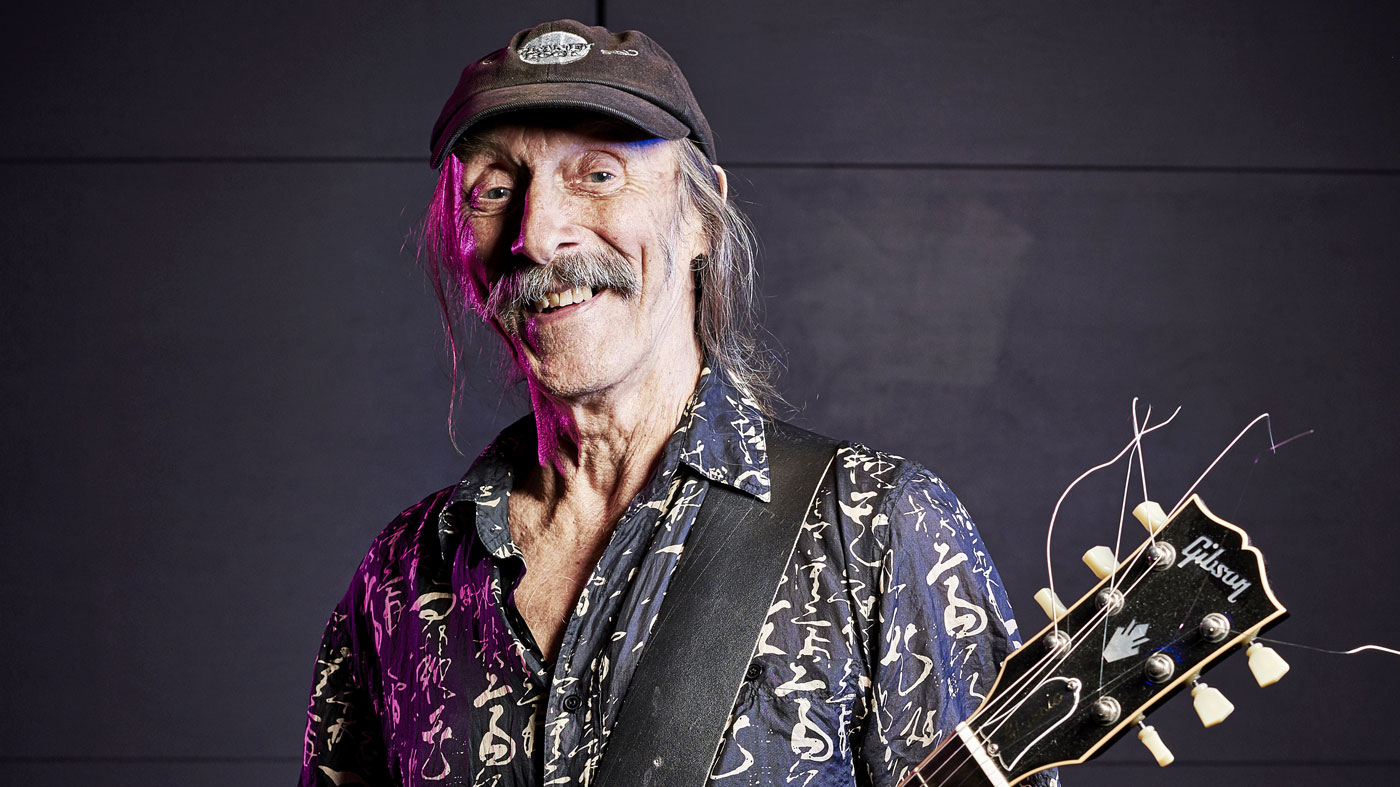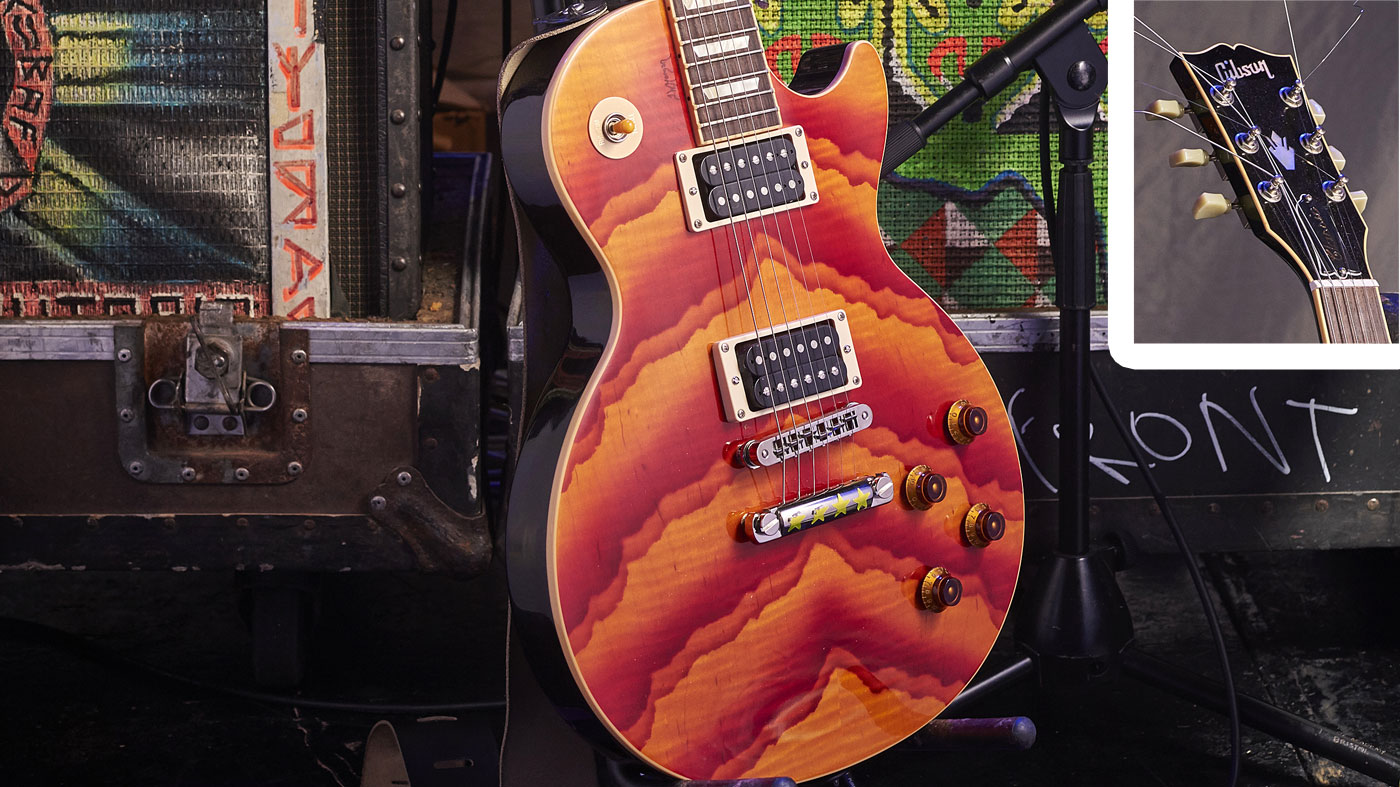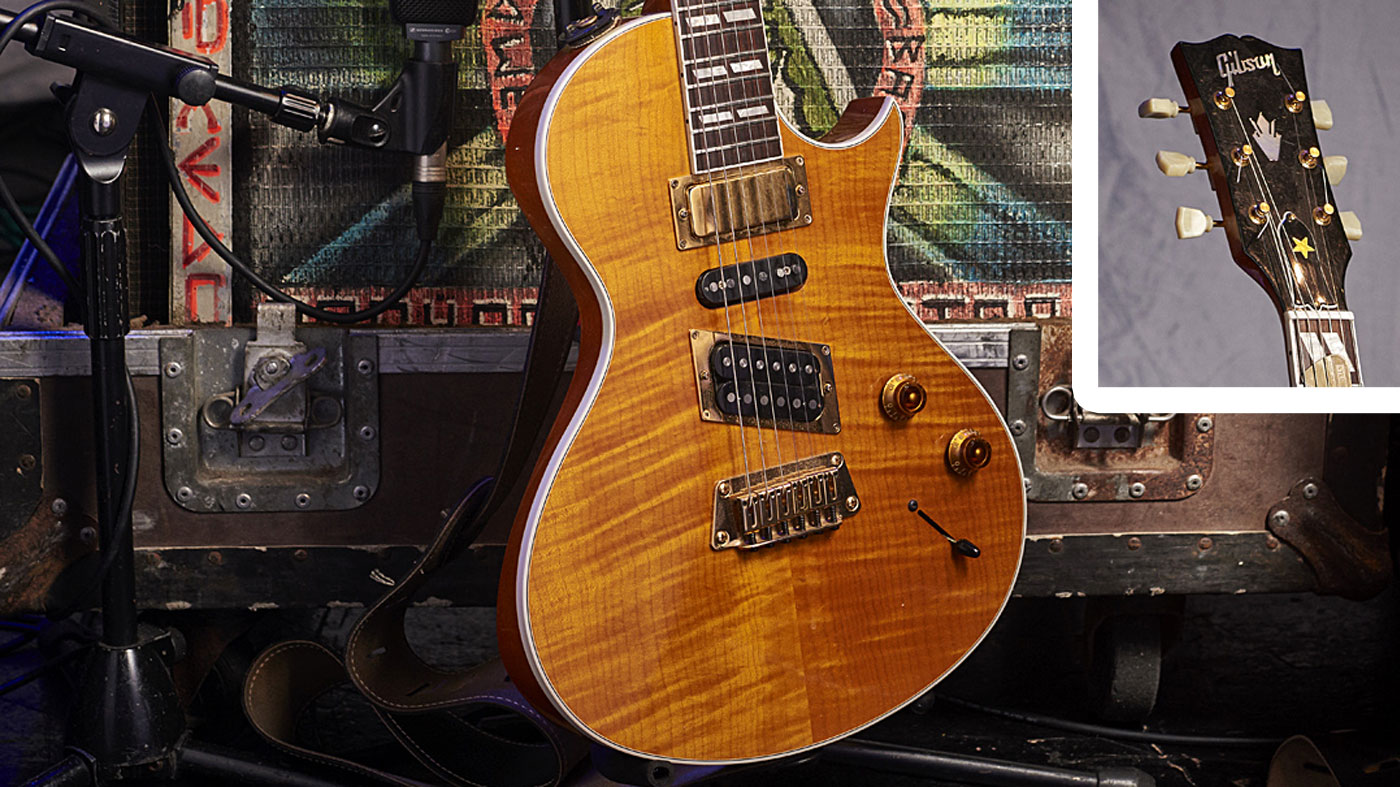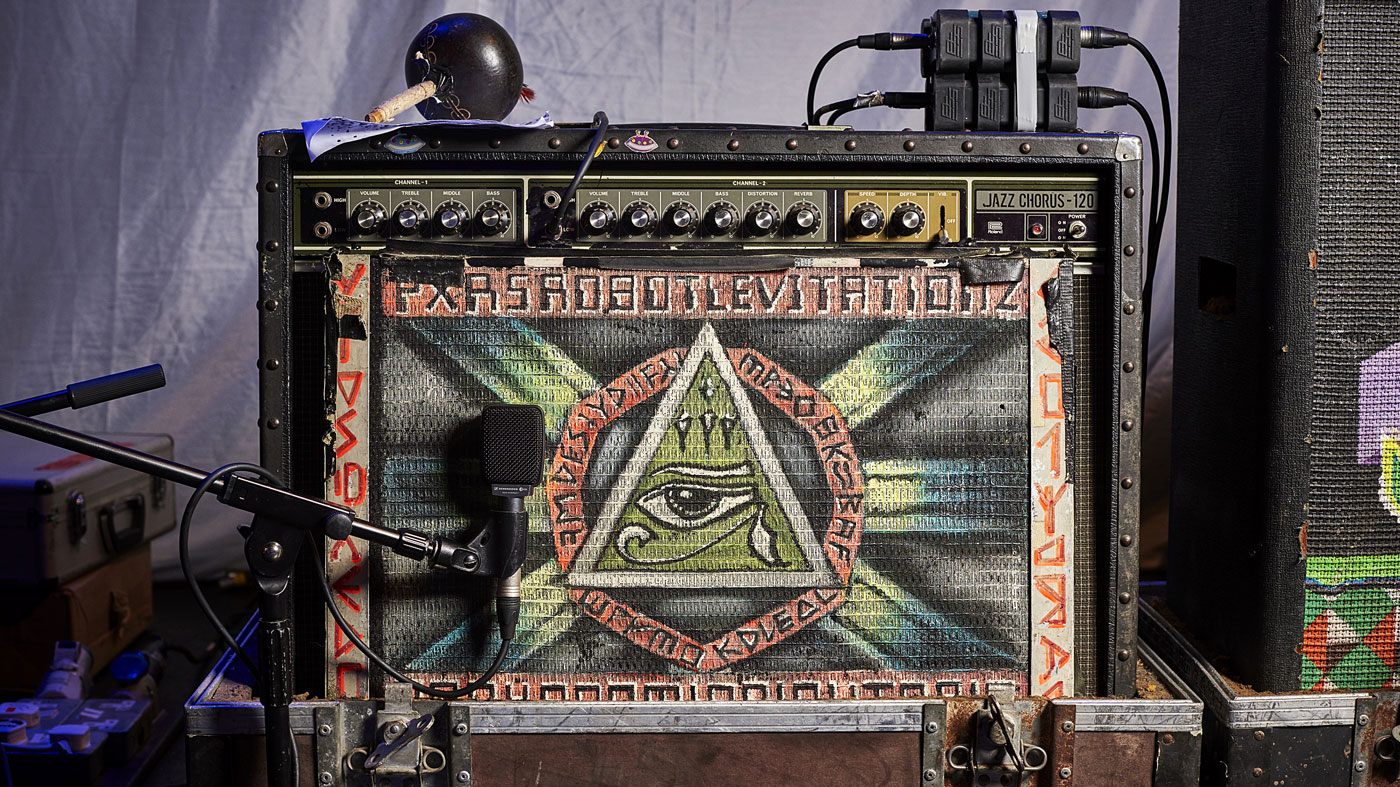Hawkwind's Dave Brock: “We do go off at tangents quite often, but the essence to everything is having good melody lines”
Adventures in tone, space and psychedelia with the space-rock vet

With a new album, Into The Woods, landing in the UK’s Top 40, Hawkwind’s mission control and de facto leader, Dave Brock, joins us to discuss his psychedelic past and present.
Dave Brock, now in his mid-70s, is a bona fide space-rock veteran. Having founded the genre’s quintessential band, Hawkwind, in 1969, he’s the only original member still onboard and has remained in the captain’s seat during its wild ride over the decades.
Emerging from the melting pot of London’s psychedelic music scene at the tail end of the 1960s, Hawkwind took a trip on the dark side and rapidly evolved with a distinctly heavier yet equally spaced-out sound.
In many ways, Hawkwind remain a benchmark of authentic British psychedelia and one of our most beloved bands
Mangling electronic oscillators with grinding guitar hooks, hard-rocking rhythms, effects-drenched streams of melody and futuristic, sci-fi lyrics, the band found strong favour within the UK’s underground gig circuit and those on the fringes of popular music.
The band are revered by the cult following that still packs out venues across the UK and beyond. In many ways, they remain a benchmark of authentic British psychedelia and one of our most beloved bands (not to mention the soundtrack to many a misspent youth!).
Outside the Bristol O2 Academy, we climb onboard an impressive silver machine of a tourbus with Dave for a pre-gig catch up.
You’ve been on the road for nearly half a century now! How did it all begin?
Want all the hottest music and gear news, reviews, deals, features and more, direct to your inbox? Sign up here.
“47 years! Will I be going to 50 years? That’s a momentous amount of time… Well, I suppose listening to Big Bill Broonzy got me started playing guitar. I’ve got a really good blues collection.
“All these characters, y’know, they had a wonderful style. I used to base myself on Big Bill Broonzy because I liked the way he played. I mean, everybody has to copy somebody to start with until you get to do your own thing. I was inspired by him, but it’s nice to think that [Hawkwind] might have influenced a lot of characters that went off to do different things.”
How did it go from Big Bill Broonzy to outer space?
“[Laughs] Well, I used to work in a cartoon studio [WM Larkins] doing cartoons for TV adverts. We used to make these big, long tape loops that you could run round - we put a lot of weird stuff on there and I ended up experimenting with guitar noises. They used some of it for a Barclays bank TV commercial! That was really the start of my psychedelia.
“I got a pickup put on my 12-string acoustic and that was my first foray into electric guitar. Then I got a Harmony Stratotone and I bought an old Dynacord echo unit and a little Vox amplifier. I got the echo unit and used to sit at home plonking away on the Stratotone - I played that guitar for quite a few years in the 60s. Later, I got a Selmer Thunderbird amp and a Silvertone [S-1384] - that was quite a weird guitar because the binding was all aluminium. I’ve had all sorts of weird guitars, actually.”
Have you managed to accumulate a fairly sizeable collection over the years?
“I’ve got about 30. I have them hanging up and I do play them - if you put them in cases, you never touch them. I ended up dealing in secondhand guitars at one point. I always cruise through eBay.
“I had some fantastic guitars, but I sold a lot of them. I had a Michigan, made by Gibson, that I sold to Pete Green. When we used to tour the States, I’d go to where the secondhand shops were to see if they had any cheap guitars and rarities. I’ve got the guitar that Bukka White did Jitterbug Swing on.”

2007 Gibson Les Paul Classic Antique Artist
Dave’s stage rig includes a 1978 Roland JC-120, two Hiwatt 4x12 cabs painted by artist Barney Bubbles, his 2007 Gibson Les Paul Classic Antique Artist and a Line 6 POD Version 2.0.

1997 Gibson Nighthawk Standard
1997 Gibson Nighthawk Standard with a Firebird mini-humbucker, NSX single coil and a slant-mounted humbucker.

1978 Roland JC-120
Dave’s number one stage amp is this 1978 Roland JC-120 painted by artist Alan Arthurs in the late 1980s.
Vintage licks
Do you use the vintage guitars on tour?
“The Les Paul I mainly use now is the Tom Morgan-painted Gibson Les Paul Classic made in 2007. I’m using that now - they’re a lot lighter. I’ve got a [Gibson] Nighthawk, too - the amber coloured one. The one I always used to play was a Westone. I would have my Westone wherever I went. A friend of mine painted it up and I used it for years.”
What amps do you use now?
We do go off at tangents quite often, but the essence to everything is having good melody lines
“I used to use Hiwatt amps. I’ve got my old Roland [JC-120] that I’ve been using for years and I have an old HH I always take as a spare. I’ve had the Roland for a really long time and it’s never gone wrong, touch wood. It’s ever so loud. I’m only on two all the time - I mean, it’s really loud. We are quite a loud band, but I never have it any higher than two!”
What do you use for distortion with the Roland JC-120?
“I use the [Line 6] POD [2.0] - it’s what I play live with all the time. I fiddled around with it and got something that I like and saved it. It’s easy to use. I can whack the old echo up whenever I want to and tap out something if it’s in the wrong timing. I just use that most of the time now. It does what you want it to do and that’s it. Very basic.
“I don’t really have a lot of foot pedals. I scorn people that use lots of foot pedals… I remember the days when people used to have big pedals on the floor - you used to trip over the things!”
What tape echo units can we hear on the old Hawkwind albums?
“Dynacord echo units originally, then it was the Watkins Copicat with the tape running round it. I’ve still got my old Roland Space Echo. The only thing is the tape goes wrong and you’ve got to make yourself a new one, so it’s a bit of a pain in the arse.”
How would you describe Hawkwind’s creative process?
“We are quite organised, actually. I mean, we do go off at tangents quite often, but the essence to everything is having good melody lines. If you’ve got good melody lines, you can always come back into it or play melody lines within your jams, y’know what I mean? We were always very organised with what we were doing. We used to go off and come back again to the original thing that we were doing in the Rockfield [Studios] days.
“I’m still waiting for Cherry Red [Records] to put the 1977 tape out, which is really good! It’s the one year that, in actual fact, hasn’t been released - it will be eventually, I hope.”
You’re playing The Roundhouse on this tour for the first time in 45 years. What can you recall from that night recording 1972’s Greasy Truckers Party?
We all took some LSD... Our tour manager at the time said, ‘Right, you’re on now!’ and we couldn’t move
“I only remember the odd thing from when we played the Roundhouse before… We all took some LSD, which was a stupid thing to do at the time. Those were the days when you had the little sugar lumps - a little drop of Sandoz [LSD-25] on a sugar lump. It was really strong acid. And we couldn’t possibly go on - it was really strong. Our tour manager at the time said, ‘Right, you’re on now!’ and we couldn’t move, so we waited half an hour… Half an hour later and we still couldn’t go on!
“It was a stupid thing to do. All these silly things you do when you’re younger - I mean, you can accommodate a lot more, can’t you? Can’t do it so much now. You get older and wiser, I think, don’t you? Well, those days are gone now, I think. Probably [laughs].”
The psychedelic music scene really took off in London in the late 60s…
“It did. There were lots of little places in Ladbroke Grove. That was where everyone was taking acid - it was the latest thing. That and ‘being yourself’. And girls taking their clothes off, running around naked and dancing topless. Expressing themselves in the Age of Expression [laughs]! The Era of Free Love - that’s what went on then. It was just like a free festival.
“Before Hawkwind, I had a band called The Famous Cure and we played at the Middle Earth club in Covent Garden. And there was a great band that we did a gig with called Dantalian’s Chariot. When you look at the bands that played there, it was a fantastic place. It used to be big into psychedelia at Middle Earth - everyone jumping around, the freedom of dancing, strobes flashing and incense burning. All nighters… It was good fun!”
Ginger, Eric and Davey
Rumour has it you were guitar buddies with Eric Clapton back in the day…
“I was, yeah. It would’ve been about ’63 or ’64. Quite early on. We used to sit around plonking away on guitars. We used to hang out in Richmond because it was a really nice place, and go down Eel Pie Island and meet up in L’Auberge coffee bar. Eric lived in Cobham in Surrey, which isn’t far from there. That’s where everybody used to hang out. We used to sit there and play guitar and swap around - each one of us would have a go. We used to sit in Richmond Park, drinking cider and smoking marijuana.
[Eric Clapton and I] used to sit in Richmond Park, drinking cider and smoking marijuana
“Later on, Ginger Baker ended up playing with [Hawkwind], which was strange because when I used to go busking down Portobello Road - this was when he was in Cream - he had a flat just round the corner and after I finished busking I used to pop round for a cup of tea.”
There were some interesting folk guitarists on the scene in the 60s, such as Davey Graham…
“Yeah, I used to know Davey Graham. I’d play in folk clubs with all these different characters - that’s what I first started doing. Davey Graham: fantastic guitarist, he was. There was a folk club we used to go down called Les Cousins in Greek Street [Soho, London]. The funny thing is they were really small places - you’d sit huddled in a chair in the corner of the room.”
The new album, Into The Woods, seems a little bit different than previous albums…
“Yeah, we thought it was a bit different. But the reason for that is we’ve got a young bass player, Haz [Wheaton]. Really, he gave Richard [Chadwick, drummer] and me a new lease of life because he’s so fast and whatever I do he can copy it. He’s a bit like Lemmy in a sense; he’s got that wonderful togetherness, which is quite rare.
“We met him here when he was 12, standing at the back door of the [Bristol O2 Academy] as we came out, waiting to get his Hawkwind albums signed. When he got older, he went to music college and learned to play the bass, then he came along as a roadie and ended up joining the band. Haz is a lot heavier a bass player and it’s made me change my way of playing a little bit as well.”
Science fiction has remained a constant theme throughout Hawkwind’s legacy. How did that work its way into the music?
“We all used to read sci-fi books and it was always a good inspiration for writing songs. I mean, musically, what we’re doing is using sounds and stories so that people can visualise and make their own stories up in their own heads, as it were. Michael Moorcock gave us a lot of ideas: The Jewel In The Skull and Elric - we did the ‘Elric’ show and ‘Stormbringer’ and all of that.
“And, of course, [Robert] Calvert and the stuff we did with [graphic artist] Barney Bubbles. In that time, we were in Notting Hill Gate and there were some very industrious things going on. Everybody came together to produce the album booklet and all these wonderful poems: ‘We touched upon a shelf of rock / Selected by the auto-mind / And left a galaxy of dreams behind…’ [from The Awakening]. We still do it now. We keep the legend going.”
Hawkwind’s latest album, Into The Woods, is available now on Cherry Red Records.
Rod Brakes is a music journalist with an expertise in guitars. Having spent many years at the coalface as a guitar dealer and tech, Rod's more recent work as a writer covering artists, industry pros and gear includes contributions for leading publications and websites such as Guitarist, Total Guitar, Guitar World, Guitar Player and MusicRadar in addition to specialist music books, blogs and social media. He is also a lifelong musician.


